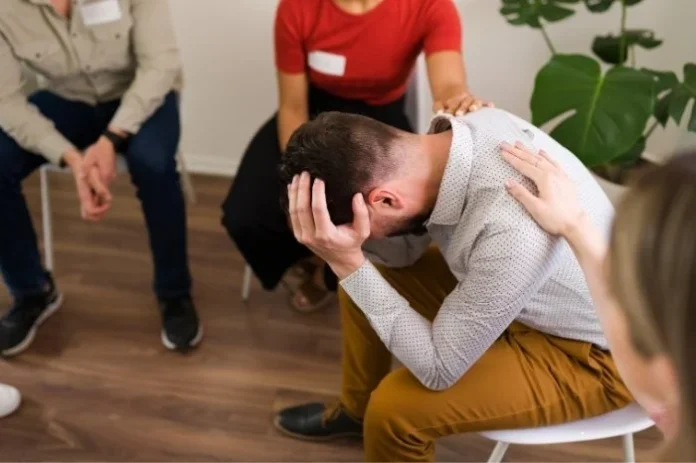Recovery no longer looks like the hushed, hidden process it once was. For decades, addiction was a subject most people didn’t discuss outside of closed rooms or whispered conversations.
But that silence is beginning to crack. Communities, treatment centers, and even workplaces are finding ways to open the dialogue, support healthier paths, and create systems where people can heal without being defined by what they’re overcoming.
The shift isn’t about softening the reality of substance use but about reshaping how we think about treatment and community care. It’s a cultural recalibration that says healing doesn’t belong on the margins—it belongs at the center of everyday life.
How Addiction Recovery Stories Inspire Change
Breaking Through Silence
The most striking change is how conversations about recovery are no longer relegated to the shadows. Social media, podcasts, and local advocacy groups are normalizing stories that used to be buried under shame.
What once felt private by necessity is now often shared openly, not for sympathy but for solidarity. The language has shifted from focusing on personal failure to focusing on resilience, which changes the tone entirely.
This openness hasn’t made the struggle less intense, but it has carved out a space where people can ask for help without feeling like they’re automatically marked. Communities are learning that support begins with listening and responding, not judging or hiding. By naming the struggle out loud, recovery becomes something that everyone recognizes as possible and worthwhile.
Why Language Matters
Changing the narrative depends heavily on how we speak about it. Words are not just descriptors—they shape perceptions and, ultimately, behavior. The idea of reducing stigma isn’t a side note; it’s central to whether someone feels safe enough to step forward and seek help. When addiction is framed only as a personal flaw, people hesitate to get support.
When it’s framed as a health issue that thrives in silence, doors to treatment suddenly look less intimidating. Schools, churches, and even workplaces are catching onto the fact that the way they address substance use publicly matters.
Leaders who adjust their language from moralizing to understanding can shift entire community dynamics. It’s not about glossing over hard truths but about creating space where those truths can be acknowledged without branding anyone permanently.
Modern Approaches to Care
Treatment itself is evolving, too. The model of one-size-fits-all care is giving way to personalized options that consider culture, lifestyle, and accessibility. In some communities, you’ll find centers that pair counseling with holistic approaches like mindfulness or nutrition support.
Others emphasize career training or parenting classes alongside recovery work. The expansion of telehealth has added another dimension—someone in a rural area can now join therapy sessions or group support without worrying about travel.
Flexibility is making recovery more attainable, especially for people who previously felt locked out due to logistics or stigma. It’s also challenging the notion that recovery must always follow a single, rigid format.
A growing number of people are finding ways to weave their healing process into daily life rather than treating it as something that must be done in isolation.
Community Anchors and Connection
While treatment programs are expanding, community remains at the core of what sustains people through recovery. Support groups, neighborhood coalitions, and faith-based initiatives are anchoring recovery in shared spaces.
Some areas have even begun offering public events centered on recovery—concerts, art shows, and fitness challenges that highlight sober living not as deprivation but as connection. This emphasis on collective care is changing how recovery looks socially.
Instead of being marked by distance and secrecy, it’s marked by involvement and visibility. Programs that once might have been seen as private obligations are now part of a larger cultural fabric, reminding people that healing doesn’t mean stepping away from life—it means stepping into it differently.
A family member, a friend, or even a co-worker can all become part of that web of support, making recovery feel less like an individual climb and more like a shared effort.
Paths That Meet People Where They Are
The variety of treatment options available today reflects how far recovery conversations have come. Some people benefit most from structured inpatient programs, while others thrive with outpatient care that allows them to balance work and family responsibilities.
For those who prefer peer-based support, programs rooted in mutual aid continue to offer spaces where accountability and empathy go hand in hand. Regional and virtual resources are also making a difference.
Depending on someone’s needs and circumstances, they might explore drug rehab in San Antonio, 12-step in Portland or virtual IOP programs that connect them to wider networks of support.
The key is not in declaring one model superior but in ensuring that each individual has access to the type of care that resonates most with them. Flexibility and inclusivity mean fewer people fall through the cracks.
Looking Ahead With Openness
Recovery isn’t just about treating a condition—it’s about rewriting the way we as a culture understand healing. Communities are learning that silence helps no one, while openness builds resilience.
As treatment expands and becomes more adaptive, and as language shifts to honor people rather than diminish them, the possibilities for recovery widen.
This is not about creating a perfect system but about creating one that leaves fewer people behind. The focus is moving away from hiding problems toward highlighting possibilities, and that’s where real change begins.
Conclusion:
Recovery today is less about following a rigid script and more about finding the path that works in real life. Communities are stepping up, treatment options are diversifying, and conversations are finally starting to match the complexity of human experience.
Healing, in all its forms, is becoming something people can pursue without fear of being defined by it. The story is no longer one of silence—it’s one of strength that keeps rewriting itself with every person who chooses to begin.





